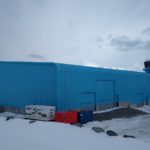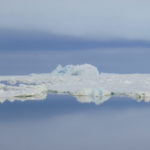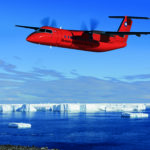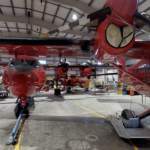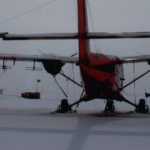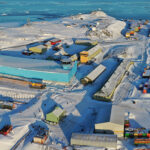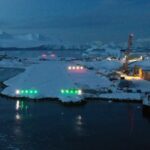The British Antarctic Survey (BAS) currently operates a Dash 7 aircraft to undertake personnel and freight movements from South America / the Falkland Islands to Rothera research station.
The Dash 7 aircraft is becoming increasingly more challenging and expensive to maintain. Pilots and engineers are become scarcer and a decision has been made to retire the Dash 7 aircraft in March 2025. A contract has been placed for a replacement aircraft under the project Future Aircraft Capability (FAC). The selected FAC is the Dash 8 series 314 aircraft and Field Aviation are the chosen supplier.
The series 314 aircraft will be specifically modified for BAS to include a large cargo door, extended range fuel tanks and performance enhancements to give the Dash 8 aircraft better short field performance. The aircraft will also have an electronic cockpit to improve situational awareness.
The series 314 aircraft burns 30% less fuel per flying hour compared to the Dash 7 aircraft.
The Antarctic Infrastructure Modernisation Programme (AIMP) aims to invest in a new aircraft and enhance the runway in Antarctica to provide an essential link between the two southern gateways, South America and the Falkland Islands to the Rothera Research Station.
This follows £300m of investment in Phase 1 of the programme, which commissioned the new polar research vessel, RRS Sir David Attenborough. This represented the largest UK Government investment in polar science infrastructure since the 1980s. British Antarctic Survey is committed to safely delivering complex operations in extreme environments and sustaining the UK’s presence in Antarctica.
3 April, 2023
A new scientific and operational support facility at Rothera Research Station for British Antarctic Survey has been made weathertight, with the cladding complete and an operations tower installed.
18 July, 2022
This month (July 2022) a formal change in the leadership of the Antarctic Infrastructure Modernisation Programme (AIMP) takes place. Elen Jones joins British Antarctic Survey as the new AIMP Programme Director …
21 April, 2022
On 17 March 2022, Professor Dame Jane Francis, Director of the British Antarctic Survey, Nigel Bird, Director of Major Programmes at UK Research and Innovation (UKRI) and Brian Love, Chief …
Supporting deep-field science
The Twin Otter is a high-wing, twin-engine, turbo-prop aircraft. They are used all over the world and are known for their rugged construction, reliability and short take-off and landing performance. …
The largest British Antarctic facility is a centre for biological research and a hub for supporting deep-field science.
The runway at Rothera is 900 metres long (2,950 ft) and is made of crushed rock. To the west of the runway lies the aircraft hangar, which houses the Dash-7 and three Twin …
